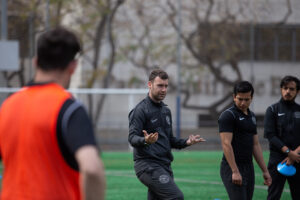Preparing a training task in football is a crucial part of player development and team success. To achieve positive results and ensure that all necessary aspects are addressed, it is essential to follow a well-structured process.
In this article, we will look in depth at the 9 steps that every football coach should follow to design and execute a coaching activity effectively and meaningfully.
These steps will not only help coaches define the objectives to be achieved during the task and training but will also provide them with the necessary tools to create an optimal learning environment for the players.
The 9 steps to follow in designing a task:
Select the Content and Concept
Start by choosing the specific content you want to train. This will depend on the phase of the session you are in. For example, in the activation phase, the focus may be on motor development, while in the main phase, the focus will be on Individual and Collective Basic Fundamentals.
Select the Didactic Strategy (DS)
Select the most appropriate didactic strategy to work on the chosen content and task. The choice of DS should be in line with the objective of the session and the phase you are in.
Determine the Number of Players
Decide how many players will be needed, considering the inclusion of goalkeepers or neutrals if necessary. Make sure to comply with the maximum number of players allowed according to the level of game understanding and didactic strategy.
Define the Playing Space
Determine the shape of the playing space, which can vary in width or length depending on the didactic strategy and the content to be worked on. You can also divide the space into sub-spaces and establish internal rules to create specific situations.
Establish the Scoring System
Define how points will be awarded in the game, depending on the didactic strategy used. This may include scoring goals, reaching designated spaces or passing through specific areas.
Establish the Rules
Introduce specific rules in the play to influence the situations you want to create. For example, you can set the rule of ‘individual marking all over the pitch’ to work on the content of the defender’s ‘tackling’.
Adjust the Gradient of Difficulty
Modify the level of difficulty as needed during the execution of the task. Make sure the task is of medium difficulty level and be prepared to increase or decrease the complexity as needed as the session progresses.
Create Questions on the Content
Anticipate possible player errors and be prepared to ask content-related questions during the task. These questions will help improve players’ understanding and learning.
Create a Visual Example
Once you have established the eight steps above, draw a visual example of the training task. Make sure that the images and cues are clear and understandable to the players when explaining the task.








